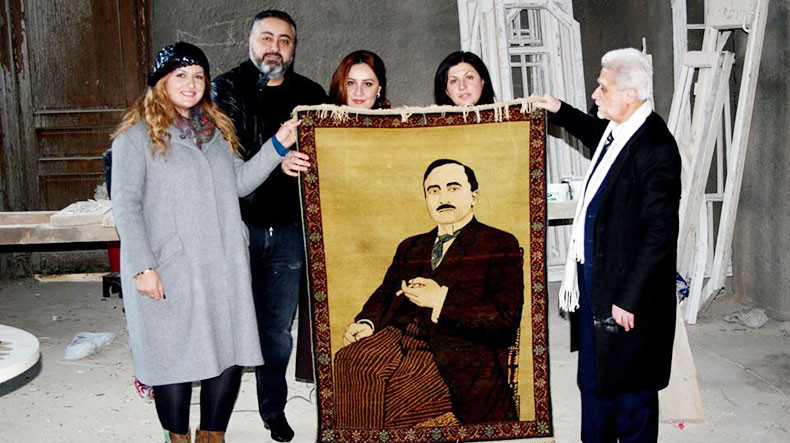
“Grigor Zohrap” carpet sheltered in its homeland after more than 100 years of alienation
The “Grigor Zohrap” carpet of historical importance, the first and most anticipated exhibit of the carpet museum, was solemnly opened at the National Center of the Armenian Carpet on 27 December.
Grigor Zohrap (1861-1915) was an outstanding writer and publicist, one of the most prominent lawyers of the time, a public and political figure, a member of the Ottoman parliament, Armenian Genocide victim.
Living and working in the Ottoman Empire, the western Armenian writer enjoyed a reputation among both Armenian and Turkish population.
As a member of the Ottoman parliament he actively participated in parliamentary debates, touched upon the most challenging issues and demanded solutions for them.
Zohrap described himself as “the advocate of the Constitution.”
Although Grigor Zohrap enjoyed the close friendship and affection of the Ottoman Empire political elite, he did not escape the fate of his people.
He was brutally murdered by the Ottoman Government decree. On June 2, 1915, the nighgt, when Zohrap was arrested, he was playing card game in the club Cercle d’Orient with Talaat Pasha and Halil Bey. It was already midnight when Zohrab rose to his feet to leave the club. Talaat Pasha also got up, came up to him and kissed him on the cheek. That kiss was to remain in history as “Talaat Pasha’s kiss of death.”
“Grogor Zohrap” carpet is a symbolic achievement for the Armenian carpet museum. It summarizes a whole period of the Armenian people’s history with endless struggle, great losses and the ability to survive.
The Armenian Highland is one of the oldest carpet weaving centers, and although how much Armenian carpets are different in their colors, ornaments, symbols, motives, they still stand out in the original manuscripts.
Portrait carpets are of a great interest in this diversity. The carpet with the portrait of Grigor Zohrap is a unique example of portrait carpets, which, according to the experts, was woven by the Bedoukian family before 1909 in Sebastia (Sebastia province, Ottoman Empire).
The carpet was lost during the Armenian Genocide, then was found in the collection of Jack Kadry, a collectioner of oriental carpets. In the spring of 2017 the carpet appeared in the Autralian auction by “Mossgreen” company. The carpet was of particular interest at the auction, which indicated the number and geography of the buyers. Victor Mnatsakanian, the founder of the Armenian National Carpet Center, succeeded in buying the carpet and donating it to the Armenian Carpet Museum.
The carpet, no doubt, will be included in the permanent exhibition of the Armenian Carpet Museum.
The National Center of the Armenian Carpet will refer to the history of Armenian carpet weaving in Sebastia in its future publications. Those carpets are the choicest and the most beautiful ones in the world according to the famous traveler Marco Polo.
Newsfeed
Videos






























